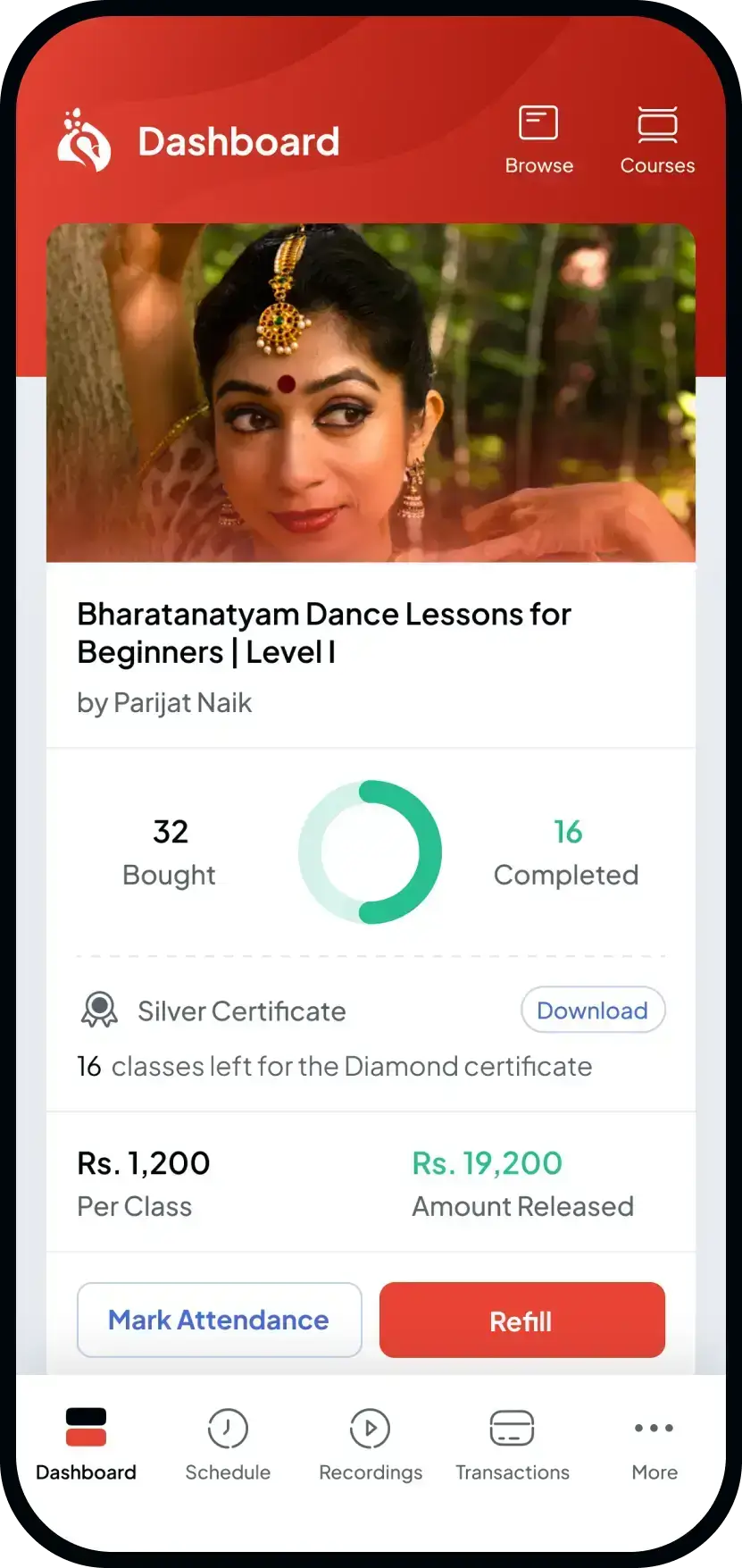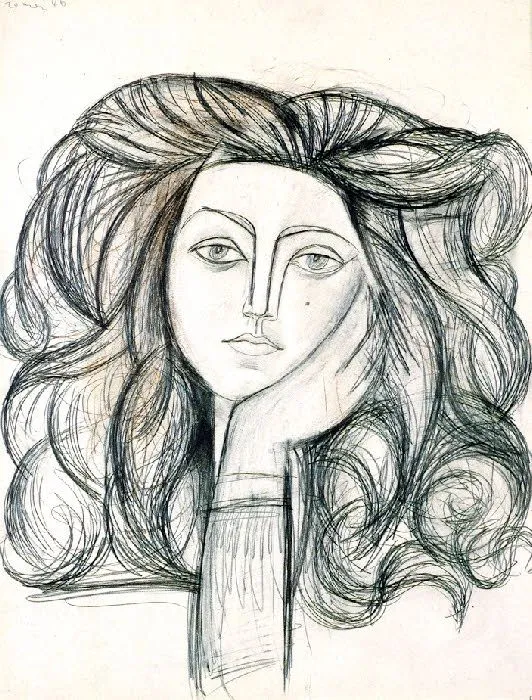Why people love ipassio?
World-class masters as teachers
Personalized & Interactive 1-on-1 classes
Course studio that amplifies learning
Access to the global creative community
Pay as you go - 2 classes at a time
World-class masters as teachers
Personalized & Interactive 1-on-1 classes
Show more
Explore Online Hindustani Vocals Courses

Our Happy Learners

Real Progress, Real Impact
Let’s celebrate passion learning
About Online Hindustani Music Classes
Are you looking for Hindustani music classes near me? ipassio offers online Hindustani music classes 1-on-1 live from the best Hindustani music teachers.
Learn Hindustani music with ease
Are you looking for the best possible way to learn Hindustani music without wasting a lot of your time? Then you may not look elsewhere. Our teachers share only their practical wisdom with our students, making sure that, what they teach is. Here at ipassio,
- Learn comfortably by seated at home
- Get actionable tips and guidance from world-renowned Hindustani vocalists
- Make payments without any long-term commitments. You can pay for the lessons for a minimum of only 2 classes.
Topics to be covered under online Hindustani music classes
The courses are designed so that teachers customize the classes based on students’ skills and level of knowledge. This may include Chota Khayal and Bada Khayal with up to 7-8 ragas: Yaman, Bhairav, Bhimpalasi, Malkauns, and Bhairavi and bandish in different taals, bhajans as well as some semi-classical forms including thumri and/or Dadra. There will be an additional focus on mastering the pitch for the students. At the end of classes, students will be well-versed in the meaning and application of melody, rhythm, and lyrics.
How to improve Hindustani Vocals at home?
People have long wondered how they can get trained in Hindustani vocals while staying at home, but thanks to newer technologies in online learning, it is possible to get vocal training from top educators right from the comfort of your home. You can easily take classes directly from the top gurus from India. You’ll begin with learning Hindustani music basics - 7 notes of Hindustani music, the ragas, the compositions, and the thekas/ talas. You’ll also learn to refine your voice, note stability, and breath control utilized by masters to advance overall tonal quality. What’s important in these classes, is the basic riyaaz that you have to perform as a daily vocal exercise.
In our model, classes are offered online through live video conferencing. That means all you need is a laptop and an internet connection.
The time taken to learn music is totally depended on you. There are courses that get finished in 24 weeks and there are courses that go on for years. Depending on your pace of learning and interest, you can decide on the duration of your classes.
How ipassio's Hindustani music classes are different from others?
ipassio has partnered up with some of the biggest exponents of Hindustani classical music to offer classes to students from all around the world. These gurus are world-renowned and have decades of experience in teaching sangeet. There are plenty of students from US, UK, Australia, Canada, Singapore, Italy, France, India, and many other countries who are already taking classes. Students can learn music directly from home, without any hassles of transportation.
Major cities our students come from :
United States of America : New York, Los Angeles, Fremont, San Jose, Santa Clara, Chicago, Houston, Philadelphia, Phoenix, Dallas, Austin, Denver, Seattle, Detroit, Washington, Boston, Memphis, Nashville, Portland, Las Vegas, Sacramento, Colorado Springs, New Orleans
United Kingdom : London, Birmingham, Leicester, Slough, Leeds, Manchester, Glasgow, Liverpool
India : Bengaluru, Pune, Mumbai, Kolkata, Delhi, Patna, Hyderabad, Chennai, Jaipur
The ideal age to start is between 7-10 years. But, there is no upper limit of age when it comes to learning Hindustani classical music. Students come from diverse age groups including children, teenagers, college-goers, working professionals or even seniors in the age bracket of 60 to 70 years of age.
The most inevitable career option for a Hindustani classical music student is to become a singer. Years of dedicated practice under the guidance of an accomplished Guru will help you to achieve this. The second option is to become a teacher and impart the knowledge you acquired from your Guru, to help other potential singers.
The best time for riyaaz as recommended by the Gurus is early morning between 4-6 AM. It helps in the habit formation. However, adult students who have several personal and professional commitments might find it difficult to adhere to such a strict regime. They can fix a time of the day for practice as per their convenience.
Start with 15-30 minutes of daily practice to build a consistent routine without feeling overwhelmed. As you progress, you can increase their practice time to 30-60 minutes each day, concentrating on improving techniques, mastering scales, or perfecting songs.
There are no specific distinctions as such. All the ragas taught at the beginner level can also be taught at the intermediate and advanced levels. Only the intensity changes. New and more complex vocal techniques and rhythms are introduced. The goal is to train the students to create their own musical content and be comfortable singing in diverse rhythmic structures and tempos so that they become well-rounded professional performers.
At the beginner level, the focus is to get the basic concepts right. Just like we learn the alphabet at the elementary level in school. From there slowly we learn to form words, then sentences, and gradually - paragraphs, and then long-form essays or stories. In vocal music, the first step is to learn to identify the swaras and sing them in their correct frequencies. Next is to learn to sing in rhythms and maintain the tempo. The next step is to identify the structure of the ragas and the different elements that make up a complete khayal repertoire.
The lesson plan for beginner-level Hindustani vocals depends on the students’ grasping capacity and learning objectives. Some students are in their early years or maybe seven or eight years old. They need constant handholding. Mostly they only repeat after the teacher. Older students who have just started learning need to be evaluated based on their learning abilities and the teaching methodology is adopted accordingly. Also, some students have learned some form of vocal music earlier. The teacher has to evaluate whether their concepts are correct or not. They are evaluated based on their proficiency and a customized lesson plan is designed accordingly.
For intermediate and advanced-level students of Hindustani classical music, learning goals should be prioritized more than the duration of practice. Ideally, take up one concept at a time and perfect it. Sit for 30-60 minutes or more depending on your requirement.
An estimated 2-3 years will take for you to perform some complex Semi-classical compositions such as Thumri. You can add 2-3 years more to it for performing a Raga in its full spectrum.
On an average, the duration of one class for Hindustani classical vocals is between 45 minutes to an hour.
As we mentioned before age can never come in the way of your learning Hindustani classical music. Trust your teacher to evaluate your learning abilities and objectives, and then create a completely customized lesson plan for you.
Additional Resources
How ipassio works?

Pick your passion
Ranging from music to creative arts, pick what you love!

Interact with an expert
Connect with your teacher over a free 1-on-1 video call to discuss your learning goals.

Set session schedules
Get session schedule matching your timezone

Pay as you go
2 classes at a time, with no long-term commitments.
Start with a free meeting now!
Pick a Course

Student
Teacher
Download our app and get going with your passion.
Get easy access to the pool of world-class educators, enthusiastic learners and everything exciting!
- Explore hundreds of courses from 400+ teachers
- Enroll easily into the course of your choice
- Mark attendance for every class you have completed
- Buy and refill classes with ease
- Schedule classes as per your availability
- Teachers can easily withdraw their fees










